Sugar Free Meal Plan Psychology: Why Your Brain Sabotages Every Diet Attempt

If you’ve ever sworn off sugar on a Sunday night only to find yourself face-deep in a donut by Wednesday afternoon, you’re not broken – you’re human. And your brain is literally working against you.
Most people think sugar-free meal planning fails because of weak willpower, but here’s the real deal: your brain has been hijacked by decades of sugar conditioning. This isn’t about being weak – it’s about understanding the hidden psychological, social, and metabolic forces that derail your best intentions, and more importantly, how to work with them instead of against them.
Get this – the average American consumes 3.5 pounds of sugar every week according to Plate and Canvas. That’s like eating a small bag of flour made entirely of sugar every seven days. No wonder our brains are completely hooked on the stuff.
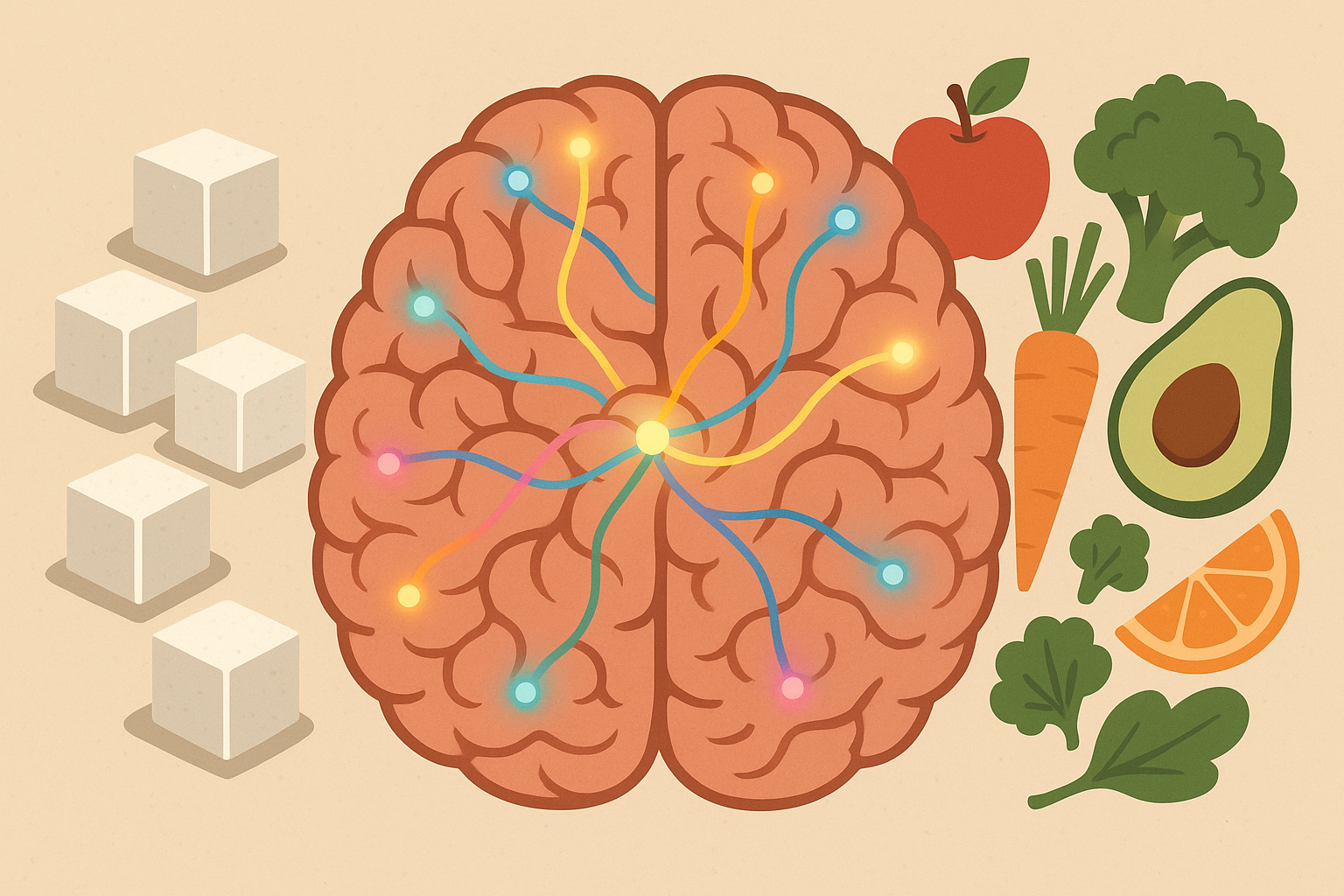
Table of Contents
- The Neurochemical War Inside Your Head
- Social Dynamics That Secretly Sabotage Success
- Metabolic Timing Secrets Nobody Talks About
- Rebuilding Your Flavor Universe From Scratch
TL;DR
- Your brain gets hooked on sugar like a drug, creating real withdrawal that peaks around days 2-3 of going sugar-free
- Social pressure around food choices creates invisible barriers – you need go-to responses that redirect conversations to positive topics
- Eating protein every 3 hours and understanding your body’s fat-burning timeline gives you predictable tools for success
- Building umami-rich, spice-forward meals makes sugar seem boring and one-dimensional once your taste buds wake up
- Understanding these hidden systems transforms constant willpower battles into sustainable lifestyle changes that actually stick
The Neurochemical War Inside Your Head
Look, your brain doesn’t just “want” sugar – it’s basically been hijacked. After years of cookies, sodas, and “healthy” granola bars, your brain expects that dopamine hit every few hours. When you don’t give it what it wants, it throws an absolute fit. This isn’t weakness – this is biology working against you.
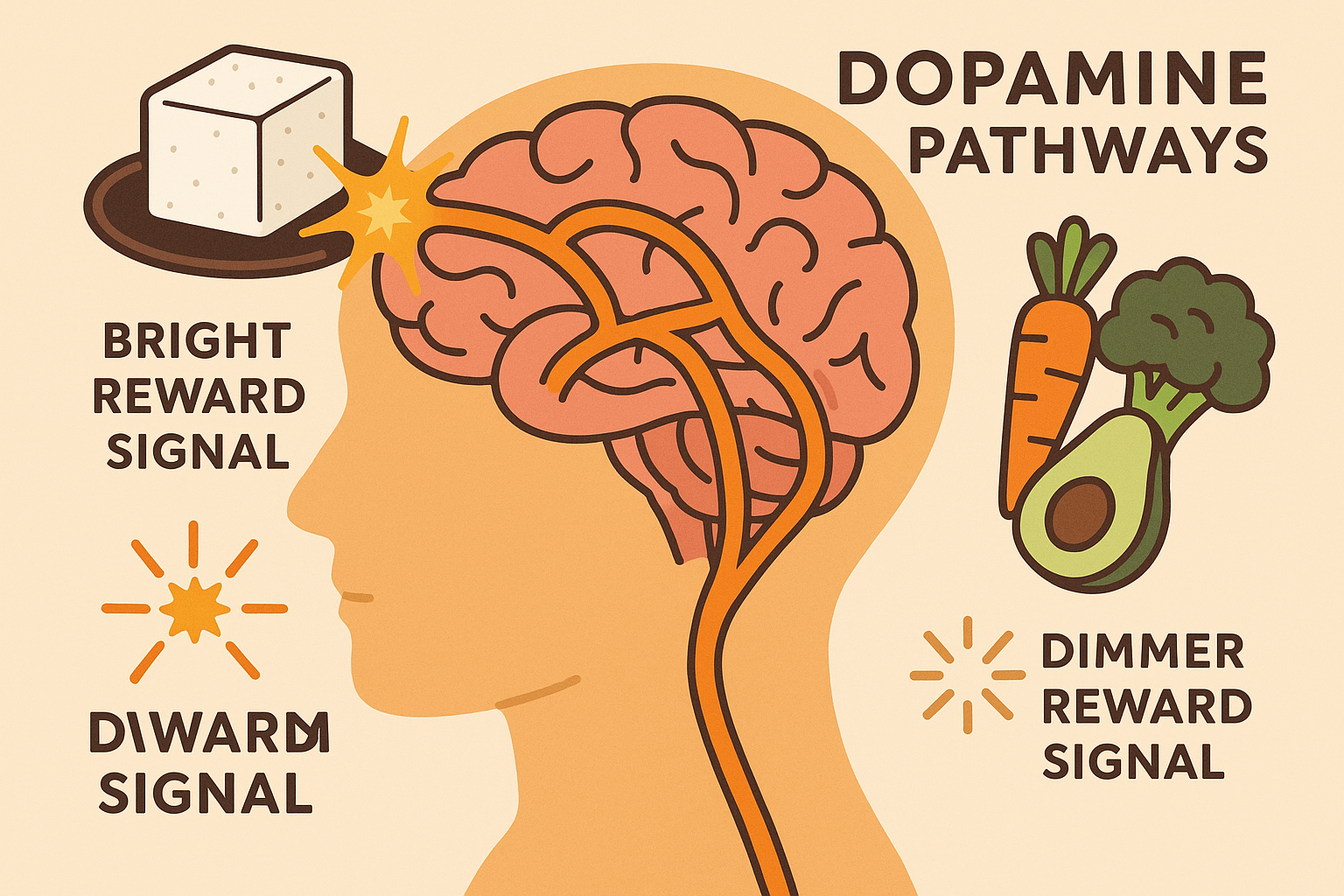
Think of it like breaking up with someone toxic. Your brain knows sugar is bad for you, but it still keeps checking its phone hoping for a text. The psychological impact is real – just like when people try dopamine detoxing and feel like they’re losing their minds for the first few days.
When Your Reward System Holds You Hostage
Here’s what’s really happening: decades of sugar have trained your brain to expect a reward at specific times. It’s like Pavlov’s dog, but instead of drooling at a bell, you’re craving cookies at 3 PM every single day.
Sarah figured this out the hard way. She’s a marketing exec who could eat perfectly all morning, then boom – 3 PM hits and she’s practically crawling to the vending machine. Turns out her brain had learned to expect that afternoon sugar rush. Her solution? She started taking a 10-minute walk with her favorite playlist at 2:45 PM. Her brain got its dopamine hit from movement and music instead of a candy bar. Genius, right?
The Critical 72-Hour “I Want to Punch Everyone” Window
Here’s something nobody tells you: your brain starts rewiring itself within 72 hours of cutting sugar, but those same 72 hours are when you’ll want to bite someone’s head off. It’s like your brain is having a temper tantrum because you took away its favorite toy.
Studies show that Days 1-3 involve the most intense sugar cravings and lower energy levels as your body begins to detox from sugar. Translation: you’re going to feel like garbage, but it’s temporary.
How to Survive Without Committing Murder:
- ☐ Plan fun stuff for days 2-3 when you feel worst (movie night, call a friend, reorganize your closet – anything to stay busy)
- ☐ Stock up on herbal tea and nuts like you’re preparing for the apocalypse
- ☐ Set phone reminders to drink water (dehydration makes everything worse)
- ☐ Go to bed early – evening is when willpower goes to die
- ☐ Have someone you can text when you want to eat everything in sight
The Supplements That Actually Help (No Snake Oil Here)
Some nutrients genuinely help your brain cope with the sugar breakup. I’m not talking about expensive miracle pills – just basic stuff that supports your brain chemistry during the transition.
These micronutrients work at the cellular level to stabilize the chaos that makes you want to raid the pantry at midnight.
| What It Is | How Much | Why It Helps | Where to Get It |
|---|---|---|---|
| Chromium | 200-400mcg | Keeps blood sugar steady | Broccoli, meat, whole grains |
| Magnesium | 300-400mg | Helps you make happy brain chemicals | Dark greens, nuts, seeds |
| B Vitamins | 50-100mg | Feeds your brain what it needs | Eggs, fish, nutritional yeast |
| Zinc | 15-30mg | Balances mood and reduces inflammation | Oysters, pumpkin seeds, beef |
Your Pancreas Has Trust Issues
Even after you stop eating sugar, your pancreas keeps acting like you’re about to have a donut. It’s like that friend who brings up your ex from three years ago – it just can’t let go. This creates fake hunger and energy crashes that feel totally real but are just your body being dramatic.
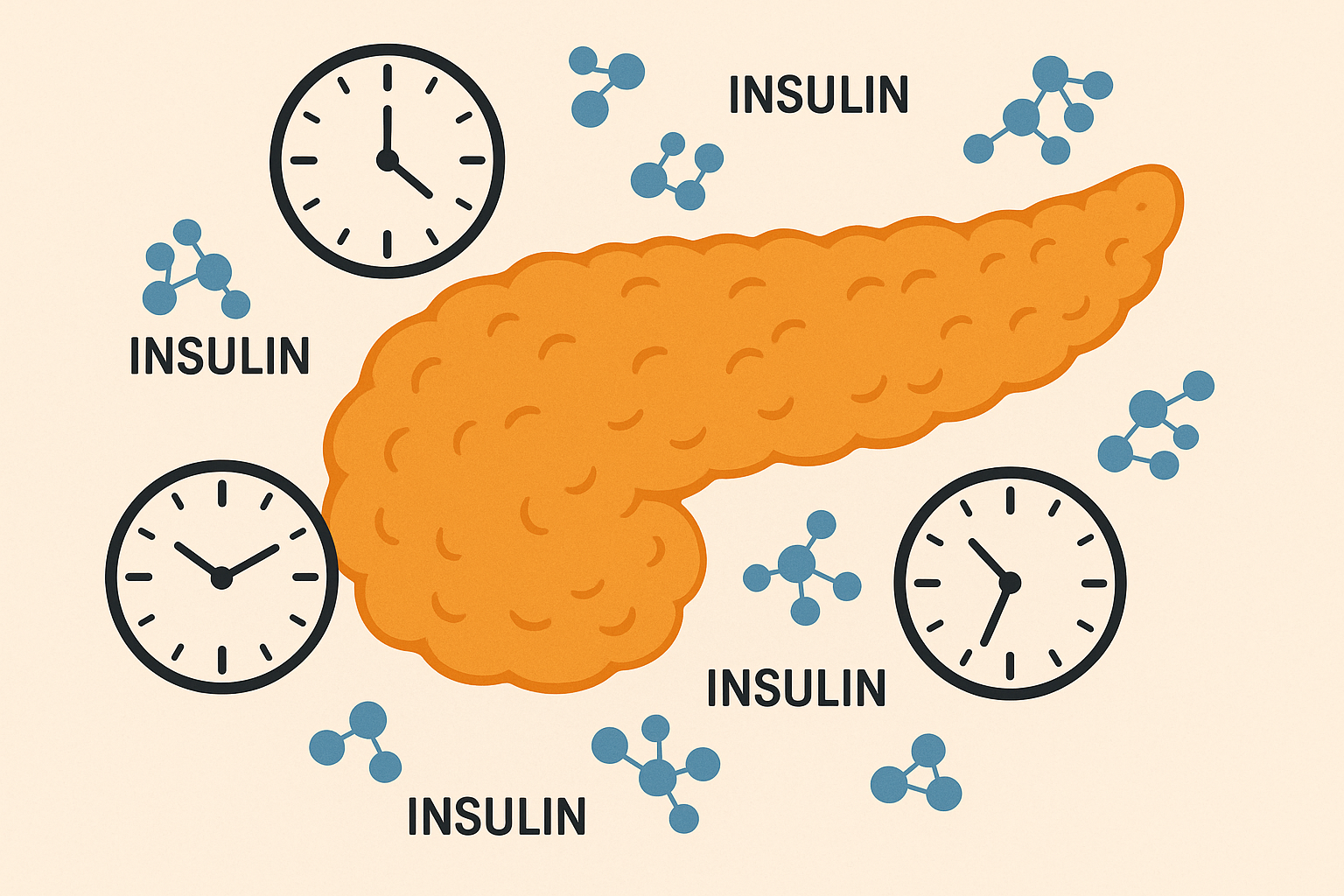
Understanding this metabolic memory thing is crucial, just like learning how to find your carb tolerance when you’re figuring out what works for your body.
Working With Your Body’s Natural Clock
Your body is naturally better at handling food at certain times of day. Morning and early afternoon are when your insulin sensitivity is highest – basically when your body is most chill about processing what you eat. So eat your biggest, most satisfying meals during these windows instead of fighting against your biology.
Your stress hormones are naturally higher in the morning anyway, so protein helps keep everything balanced while kickstarting your metabolism for the day ahead.
Social Dynamics That Secretly Sabotage Success
Here’s something nobody talks about: going sugar-free makes other people uncomfortable. When you pass on the office birthday cake, you’re accidentally making everyone else question their choices. And trust me, they don’t like it.

Why People Get Weird When You Don’t Eat Sugar
When you decline sugary foods, you’re unintentionally challenging everyone else’s food decisions. It’s like being the designated driver at a party – suddenly everyone feels judged, even though you’re just doing your thing.
Even though “Following a keto diet appears to be safe for most people” according to Diet Doctor, people still get defensive when you choose differently. It’s not about the food – it’s about feeling judged.
How to Dodge Food Pressure Without Being That Person
I’ve learned that having go-to responses ready saves you from awkward moments. Here’s what actually works:
What to Say When People Push Food on You:
- The Redirect: “That looks amazing! I’m really enjoying this salad though. How was your weekend?”
- The Appreciation: “Thanks for thinking of me! I just love that we’re all here together.”
- The Future Focus: “I’m saving room for dinner later. Tell me how you made this!”
The key is redirecting the conversation away from what you’re not eating and toward something positive.
Become the Person Who Brings the Good Stuff
Instead of being “the person who can’t eat anything,” become “the person who always brings something delicious.” This completely changes how people see your food choices.
My friend Mike used to be known as “the guy who can’t eat cake.” Then he started bringing this incredible coconut curry chicken to every potluck. Now he’s “the guy who makes that amazing curry everyone asks for the recipe.” Same eating habits, totally different social dynamic.
Talk About How You Feel, Not What You Don’t Eat
Instead of explaining why you don’t eat sugar, talk about how great you feel. “I’ve been sleeping so much better lately” or “My energy has been incredible” makes people curious instead of defensive.
This positive energy sharing creates reinforcement loops where people start associating your food choices with feeling awesome rather than restriction.
Office Food Politics Are Real
Workplace food culture is intense. Birthday cakes, afternoon treats, client meetings with pastries – it’s like a minefield of sugar disguised as team building.
Pick Your Battles Strategically
You don’t have to participate in every food ritual, but identify the 2-3 that are most important for relationships. Maybe you skip the random Tuesday donuts but show up for the monthly birthday celebration with your own sugar-free contribution.
Research shows that 95% of patients pay $0 out of pocket when they see a dietitian with Berry Street, which means you can get professional help navigating these workplace food challenges if you need backup.
The key is strategic participation – showing up for relationship-building moments while maintaining your boundaries during less important food situations.
Metabolic Timing Secrets Nobody Talks About
Here’s the thing: your metabolism isn’t the same all day long. Eating sugar-free foods at 8 AM hits differently than eating them at 8 PM. Most meal plans ignore this completely, which is why they fail.
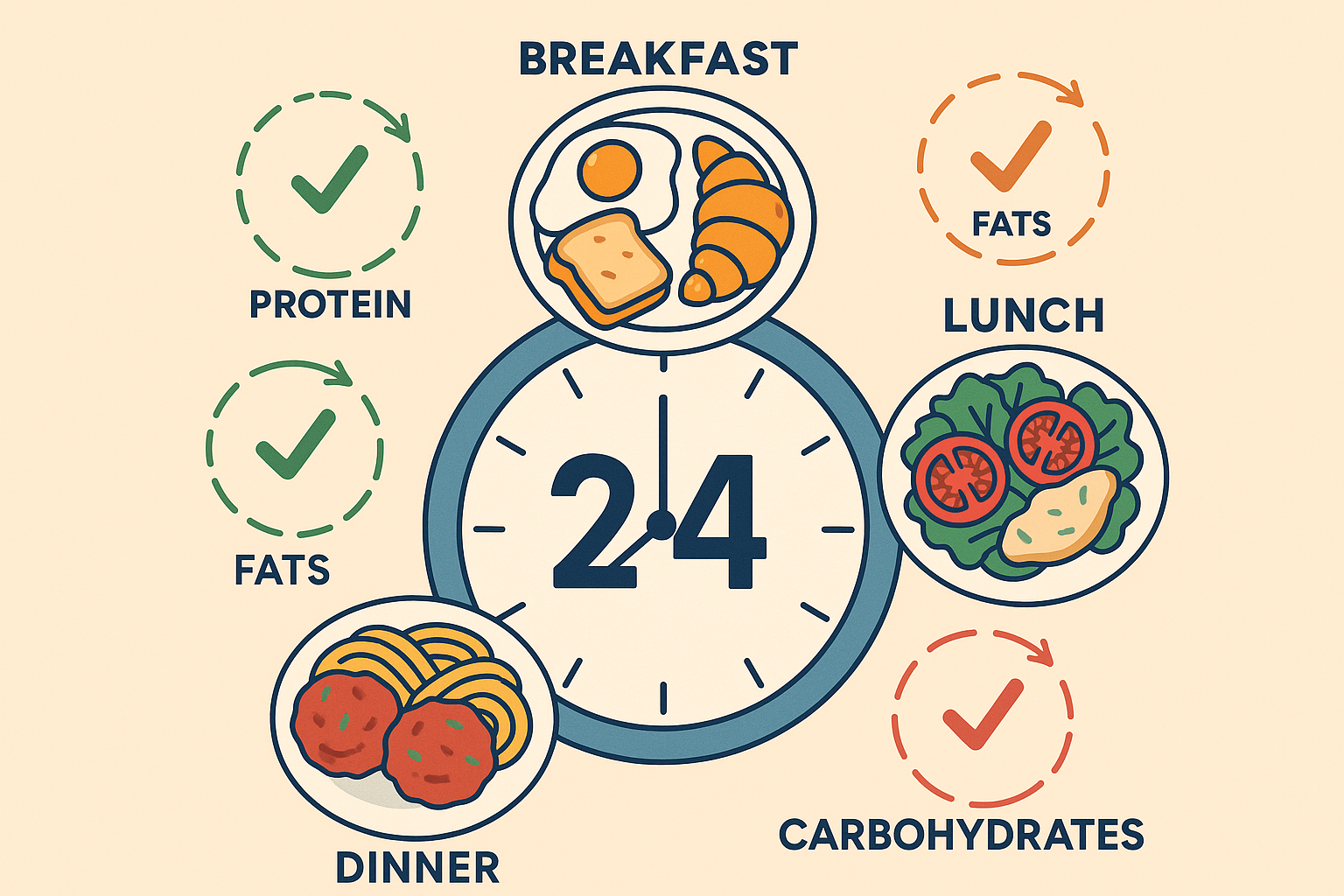
This timing stuff works hand-in-hand with intermittent fasting strategies, where when you eat becomes just as important as what you eat.
The Protein Game-Changer
Protein is like insurance against sugar cravings. Eat enough at the right times, and you won’t get those “I need chocolate NOW” moments that derail everything.
Start Your Day Right
Get 25-30 grams of protein within 90 minutes of waking up. This isn’t just breakfast advice – it’s metabolic armor for your entire day. Your stress hormone (cortisol) is naturally high in the morning, and protein helps keep it from going haywire.
This morning foundation prevents the blood sugar rollercoaster that makes sugar cravings feel irresistible later in the day.
| When | How Much Protein | Why It Matters | Easy Options |
|---|---|---|---|
| 6-8 AM | 25-30g | Stabilizes morning stress hormones | 3 eggs + Greek yogurt, protein smoothie |
| 11 AM-12 PM | 20-25g | Prevents pre-lunch crashes | Turkey roll-ups, nuts + cheese |
| 2-3 PM | 15-20g | Blocks afternoon sugar attacks | Hard-boiled eggs, protein bar |
| 6-8 PM | 25-35g | Helps you recover overnight | Salmon, chicken, tofu stir-fry |
The Every-Three-Hours Rule
Eating protein every three hours keeps your blood sugar steady, which means no more “hangry” moments that send you straight to the candy aisle. It’s like keeping your car’s gas tank topped off instead of running on empty.
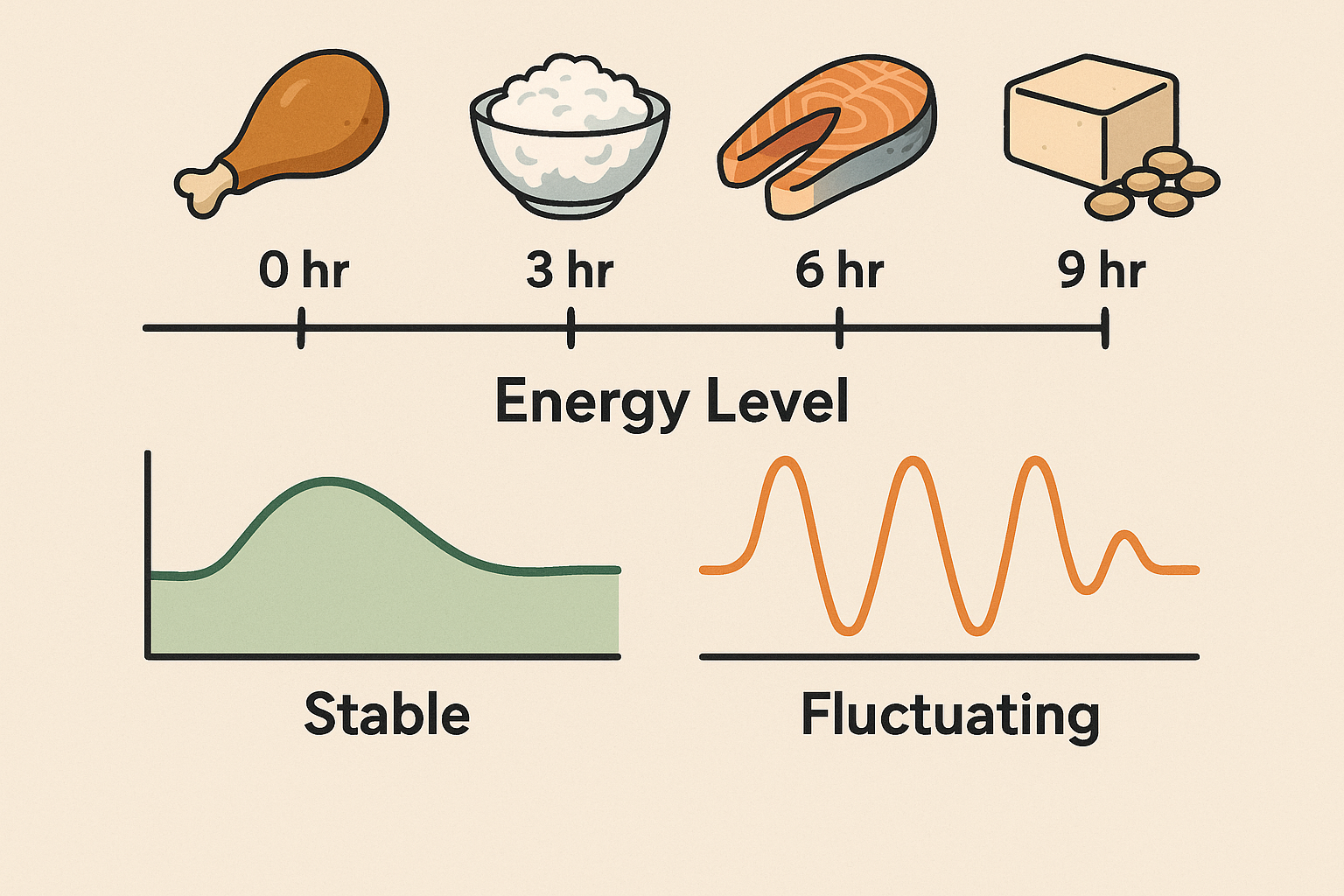
I’ve seen this work over and over. People who stick to this rhythm tell me they stop thinking about food all the time because their body trusts that fuel is coming. It works with your body’s natural protein synthesis cycles to maintain steady energy without the peaks and crashes of sugar-dependent metabolism.
The Fat Adaptation Rollercoaster
Switching from sugar-burning to fat-burning is like learning to ride a bike – awkward at first, then suddenly everything clicks. But most people quit during the awkward phase because nobody warns them what to expect.
Weeks 1-2: Everything Feels Wrong
Your cells are basically confused because they’re used to running on sugar. You’ll feel tired, maybe a little foggy, and definitely cranky. This is normal. Eating more healthy fats (35-40% of your calories) during this phase gives your body alternative fuel while it figures things out.
The good news? “The main fear about lower-carb and higher-fat diets has always been a concern about the potential increase in the risk of heart disease. However, interventional studies so far indicate that if anything the risk appears to decrease” according to Diet Doctor. So you can eat those avocados guilt-free.
During this metabolic confusion phase, your cells are still expecting glucose as primary fuel, creating fatigue and cravings that feel overwhelming but are temporary.
Weeks 3-4: The Magic Happens
This is when people usually have their “aha” moment. Suddenly you can climb stairs without getting winded. That 3 PM energy crash disappears. Your brain feels clearer. It’s like someone replaced your old engine with a newer, more efficient model.
Fat-burning enzymes increase significantly during this phase, often creating a noticeable energy breakthrough that makes continued adherence feel natural rather than forced.
Week 5+: You Become Metabolically Flexible
Now you’re operating with a hybrid engine – you can run on fat or the occasional complex carb without your system freaking out. This is the sweet spot where you can have a piece of birthday cake without it triggering a week-long sugar bender.
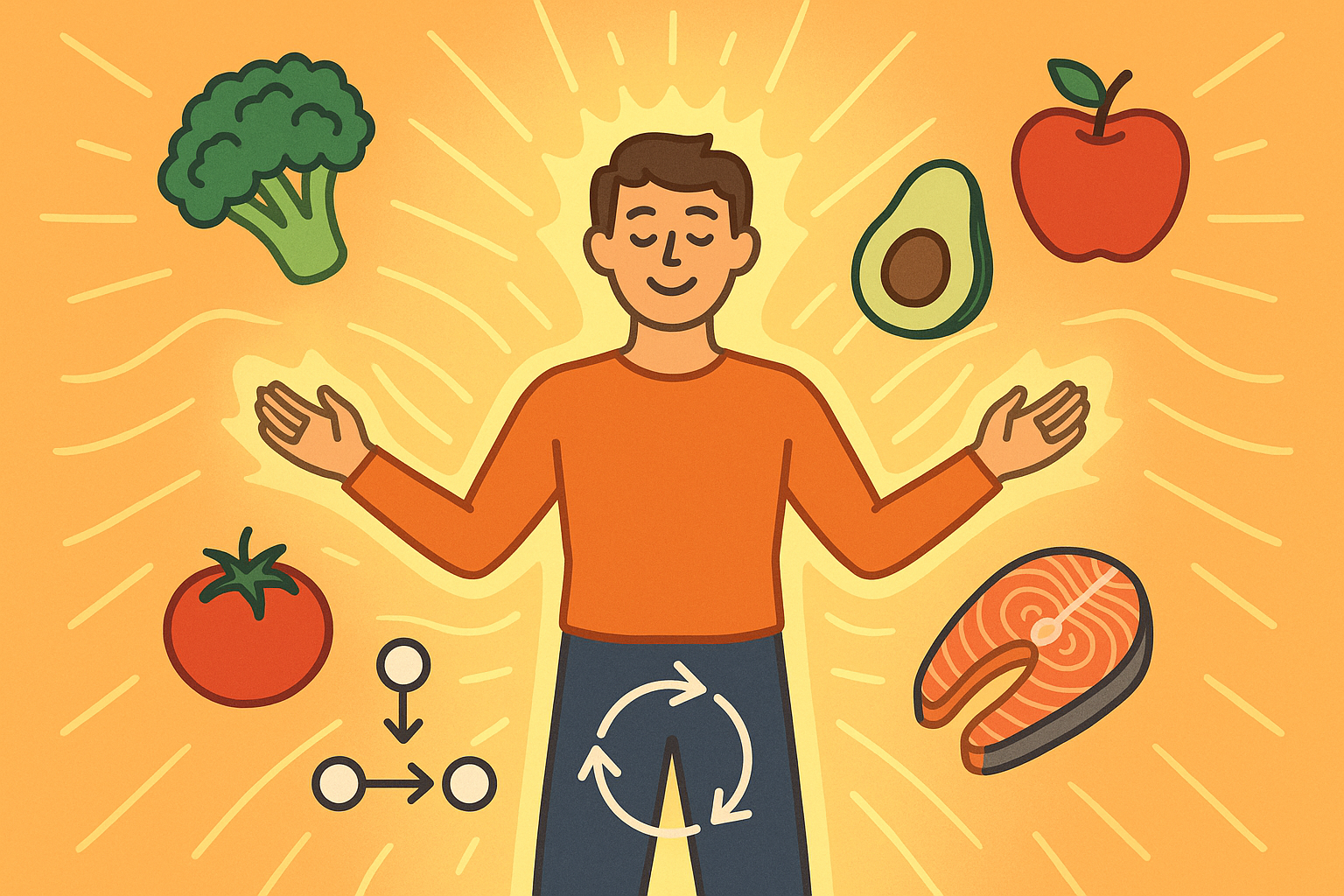
This metabolic mastery phase represents true metabolic flexibility – your body efficiently uses both fats and glucose from complex carbohydrates without triggering sugar cravings.
Rebuilding Your Flavor Universe From Scratch
Most sugar-free meal plans fail because they focus on what you’re giving up instead of what incredible flavors you’re about to discover. It’s like being stuck listening to Top 40 radio when there’s a whole world of music out there.
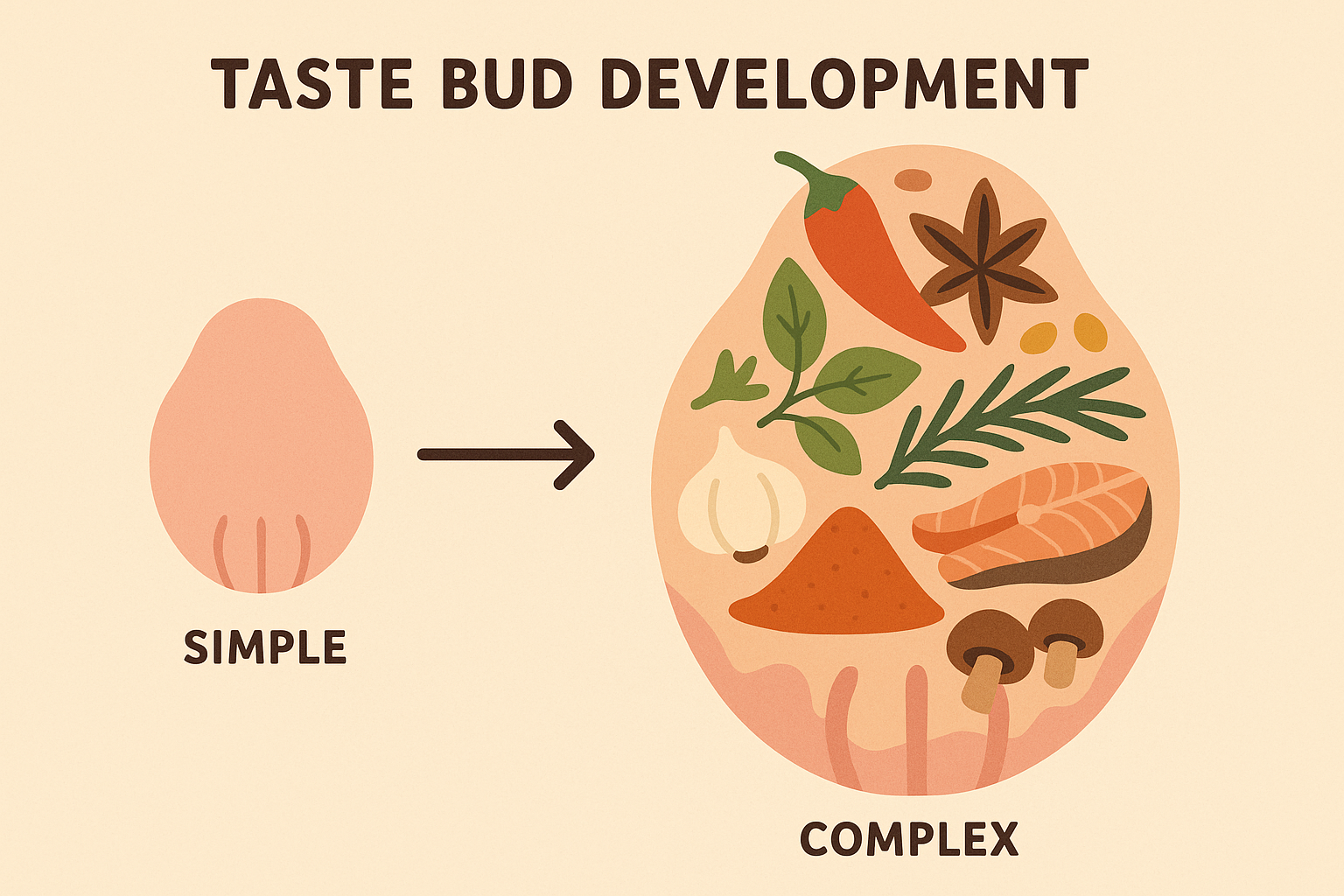
This flavor exploration connects to mastering the five elements of flavor in cooking, where umami becomes your secret weapon for creating satisfying meals.
Umami: The Secret Sauce
Umami is that deep, savory satisfaction that makes you go “mmm” and forget you ever wanted dessert. It’s the fifth taste that most people don’t even know exists, but once you discover it, everything changes.
This fifth taste provides the deep satisfaction that prevents the “something’s missing” feeling that drives people back to sugar. It’s like discovering a whole new dimension of flavor that sugar was blocking.
The Triple Threat Strategy
Combine three umami sources in each main meal and watch magic happen. I’m talking about a fermented element (like miso or aged cheese), mushrooms, and a protein with natural savory compounds.
My friend Jennifer cracked the code with her “umami bomb” salad: grilled chicken + aged parmesan + sautéed mushrooms + miso-tahini dressing. She said it was so satisfying that she completely forgot about her usual post-lunch chocolate craving. That’s the power of strategic flavor building.
This umami stacking method creates flavor depth that satisfies your brain’s reward-seeking behavior without any sweetness required. I typically recommend a fermented element, mushroom component, and protein with natural glutamates for maximum impact.
Spice Up Your Life (Literally)
Sugar has been masking your ability to taste complex flavors. Once you cut it out, your palate wakes up like it’s been sleeping for years. Suddenly herbs and spices become fascinating instead of just “hot” or “not hot.”
The aromatic complexity approach works similarly to improving digestion naturally, where herbs and spices enhance both flavor and how your body processes food.
One New Spice Adventure Per Week
Instead of overwhelming yourself, introduce one new spice combination each week. It keeps things interesting and prevents the boredom that sends people running back to sugar.
This weekly progression continuously evolves your palate and prevents the flavor fatigue that derails most sugar-free attempts.
Your Spice Journey:
- Week 1: Cumin + Coriander (warm, earthy Middle Eastern vibes)
- Week 2: Smoked Paprika + Garlic Powder (Spanish depth that makes everything better)
- Week 3: Five-Spice + Ginger (Asian complexity that wakes up your taste buds)
- Week 4: Za’atar + Sumac (Mediterranean brightness that’s like sunshine on food)
- Week 5: Berbere + Cardamom (Ethiopian heat with floral notes)
- Week 6: Garam Masala + Turmeric (Indian richness that’s like a warm hug)
Play With Temperature and Texture
Your brain craves variety, and you can give it that through temperature and texture contrasts instead of different types of sugar. Think warm roasted vegetables over cold greens, or chilled soup with a warm garnish.
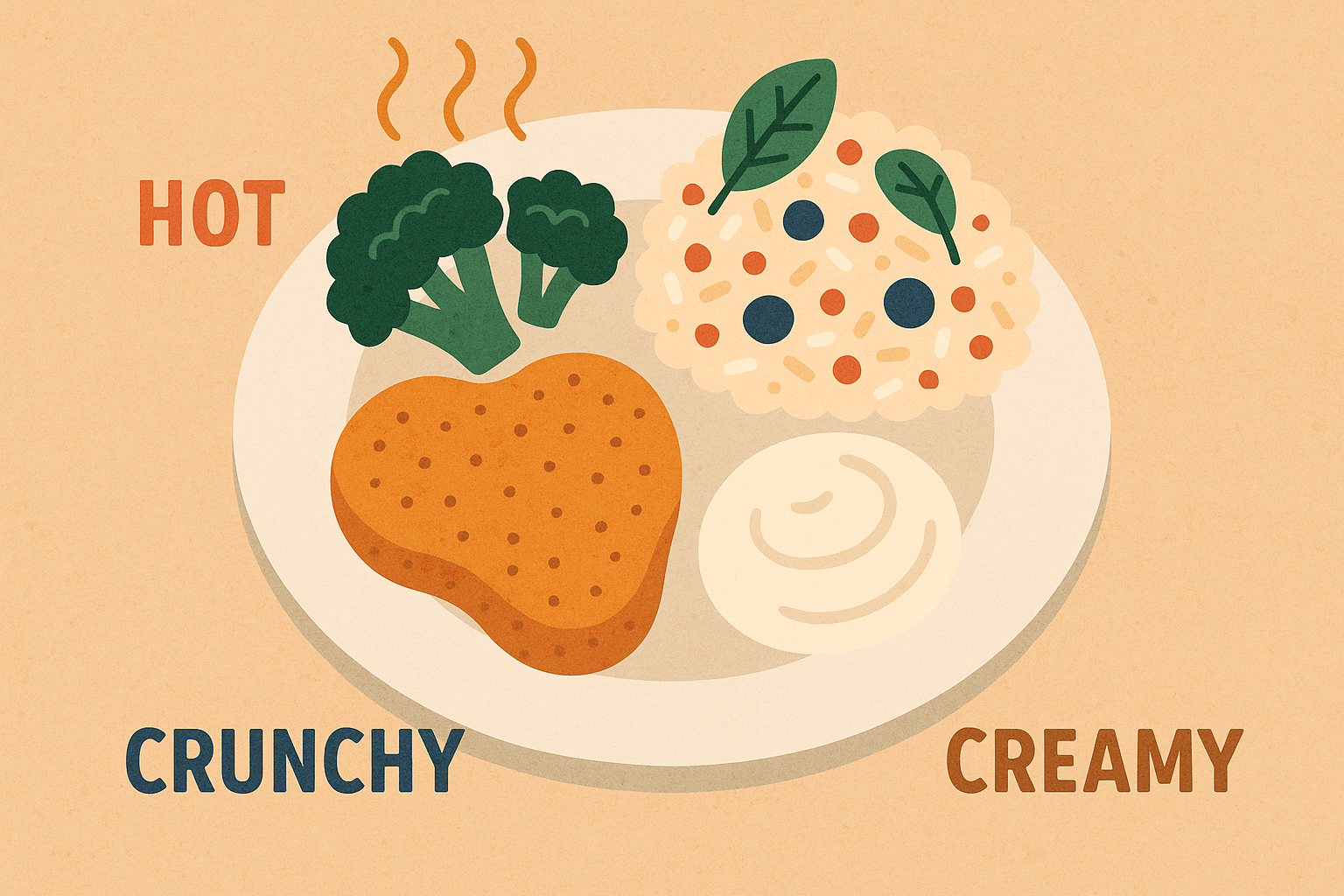
Incorporating contrasting temperatures and textures within single meals creates sensory complexity that satisfies your brain’s novelty-seeking behavior. This strategy replaces the variety you used to get from different types of sugar with sophisticated sensory experiences.
The Contrast Formula:
- Something Crunchy: Toasted seeds, nuts, or crispy vegetables
- Something Creamy: Avocado, tahini, or coconut cream
- Temperature Play: Hot and cold elements in the same dish
- Something Liquid: Flavorful broth, herbal tea, or infused water
Real Talk: This Isn’t Easy, But It’s Doable
Look, I’m not going to lie to you and say cutting sugar is a breeze. The first few days suck. You might be grumpy. Your family might avoid you. You’ll probably have moments where you question your life choices while staring longingly at a donut shop.
But here’s what I’ve learned after helping hundreds of people through this: it’s not about willpower. It’s about understanding what’s happening in your body and working with it instead of against it. When you know that your cravings will peak around day 2-3, you can plan for it. When you understand that your pancreas needs time to adjust, you can be patient with the process.
The metabolic timing stuff isn’t just theory – it’s practical tools that make the difference between white-knuckling through cravings and actually enjoying your food. Your brain’s reward system can absolutely be retrained, but it takes understanding the process, not just hoping willpower will save you.
And that flavor universe you’re about to discover? It’s like going from black and white TV to 4K. Once you experience the depth of umami, the complexity of spices, and the satisfaction of perfectly timed nutrition, sugar starts to seem kind of… boring. One-dimensional. Like that song you used to love but now makes you cringe.
The social stuff gets easier too. Once people see that you’re not miserable, not preaching, and actually enjoying amazing food, they stop seeing your choices as a judgment on theirs. Some might even get curious about what you’re doing.
Here’s the bottom line: your body wants to feel good. It wants stable energy, clear thinking, and genuine satisfaction from food. Sugar hijacked that system, but you can take it back. It just takes understanding how the system works and giving yourself time to reset.
You don’t need perfect willpower. You don’t need to be superhuman. You just need to be smarter about working with your biology instead of fighting it. And honestly? Once you get through those first few weeks and start feeling the difference, you’ll wonder why you waited so long to make the change.
If you’re looking for high-quality, bioavailable nutrition support during your sugar-free transition, Organic Authority’s carefully vetted collagen products can help maintain stable energy and support the metabolic changes your body is making. Their evidence-based approach to wellness aligns perfectly with the systematic understanding needed for long-term success.
Your future self – the one with stable energy, better sleep, and freedom from constant food thoughts – is rooting for you. Trust the process, be patient with yourself, and remember that every craving that passes makes the next one a little easier to handle.
Ready to start your sugar-free journey with science on your side? Check out Organic Authority’s nutrition offerings and begin rebuilding your relationship with food from the ground up.

